Text

This colorful “mini beast” is a charming millipede often dubbed the Cherry Millipede, Apheloria virginiensis corrulgata. Sporting bright warning colors of black and yellow, this many-legged decomposer advertises its chemical defenses. When threatened, it emits a form of cyanide gas which has an odor like cherries or almonds. This interesting millipede is one of 19 species found at the Edge of Appalachia. You can read more about them on their blog:
5 notes
·
View notes
Text
Because most Native American pottery we discover through excavations or surface collections is broken into small pieces called sherds, people often ask us “what can those pieces tell us?” As it turns out, quite a lot! Learn more from Bob Genheimer, our Curator of Archaeology on our “Off the Shelf” Blog:
0 notes
Text
A tintype is a wet-collodion process, same as the ambrotype, with the emulsion applied by hand, but on a dark lacquered iron plate instead of glass. The lacquer forms the dark background required to reveal the positive image. Tintypes are often coated with a protective varnish. Learn more from James DaMico, Curator of Audiovisual Collections:
0 notes
Text

Savior Maier and his son-in-law, F. L. Emmert, opened a saloon at the corner of Clifton and Vine streets in 1881. Learn more with: "The Long Arm of Prohibition: The F. L. Emmert Company’s Struggle to Survive" on our "Off the Shelf" blog by Sarah Staples, Archivist!
3 notes
·
View notes
Text


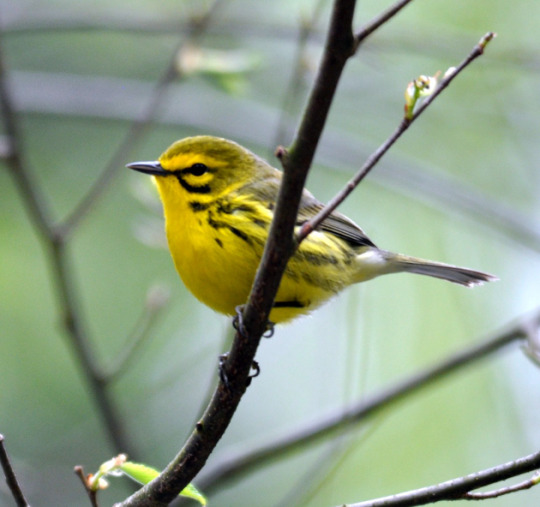
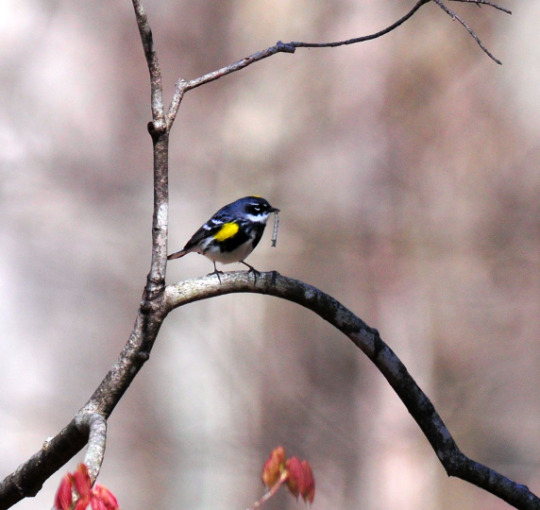
🐦The birds are back in town! This weekend is #WorldMigratoryBirdDay (May 9). Bird migration is at its peak right now in the Cincinnati area and on our Edge of Appalachia Preserve. Learn more from Mark Zloba, our EDGE Ecological Manager on our Off the Shelf Blog!
3 notes
·
View notes
Text
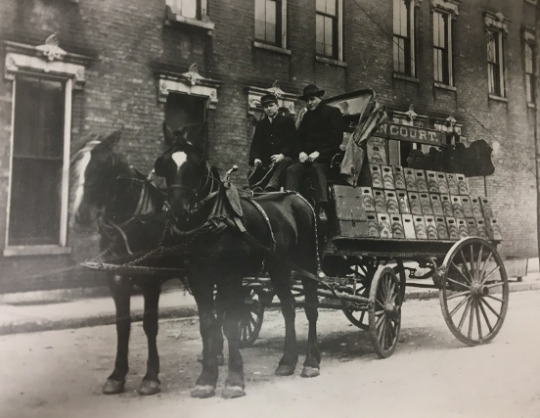
A Snapshot of Early Cincinnati Breweries. By: Sarah Staples, Helen Steiner Rice Archivist
Early immigrants, like Frederick Billiods, William Attee, Patrick Reilly, Peter Jonte, Thomas Wood and John Walker, opened breweries in Cincinnati that produced beers found in their native countries – France, England and Ireland – mostly traditional ales and porters. Keep reading: https://www.cincymuseum.org/2020/05/05/a-snapshot-of-early-cincinnati-breweries/
#cincymuseum#unionterminal#cincinnati#history#cmcuncrated#ohio#beer#beerhistory#craft brewery#brew#breweries
1 note
·
View note
Text

The ambrotype is a direct positive image and uses the wet collodion plate process. Learn more from James DaMico, our Curator of Audiovisual Collections on our Off the Shelf Blog!
https://www.cincymuseum.org/2020/04/28/ambrotypes/
1 note
·
View note
Text
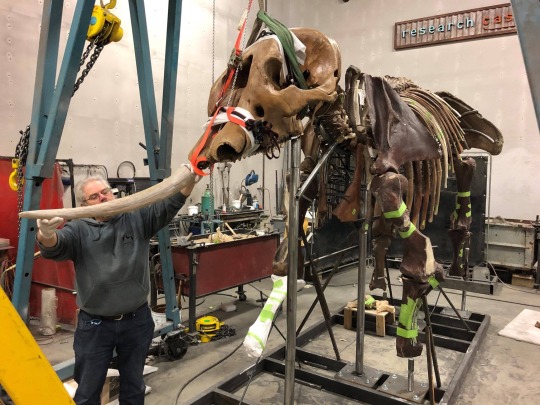
Long live the extinct mastodon!
By: Glenn Storrs, Withrow Farny Curator of Vertebrate Paleontology
Among the many mastodon fossils in Cincinnati Museum Center’s collection, by far the best example is the Overmyer Mastodon (named for the generous farmer on whose land it was discovered), from an agricultural drainage ditch excavation near Rochester, Indiana. Collected in 1978 by staff, students and alumni of Earlham College, the skeleton was acquired by CMC in the late 1980s. Since that time, it has been the subject of several research projects, but has had little other public exposure. That is about to change as we prepare to install the restored skeleton in our newly refreshed Ice Age exhibit. In a sense, we will be bringing this mastodon back from the dead.
The skeleton is beautifully preserved and about 70% complete. Essentially the entire vertebral column, ribs, hips, a shoulder blade and most of two of the legs are present. The skull and mandible are particularly fine, although neither tusk was found, so these latter will be represented in the skeletal mount by replicas, just as two of the limbs will be. At least some of the missing portions may have been scattered or destroyed by the ditch excavating machinery prior to discovery. The bones were buried at the bottom of what was originally a glacial outwash pond and have been dated to about 12,500 years ago. Pollen from the site suggests an open woodland spruce-dominated forest environment. The skeleton was not fully mature at the time of death, because unfused sutures or growth plates are clearly visible on some of the bones. However, it was a young adult and evidence from its anatomy, especially the shape of the skull and the size and orientation of the tusk sockets relative to the grinding tooth row, indicate that the animal was female (at about 7.5 feet high at the shoulder, a relatively large female). Of special interest is a rib that shows evidence of a swollen and partially healed break, indicating an earlier injury. How and why the animal ultimately died is unknown.
In order to reconstruct the skeleton for exhibit, it’s necessary to fully clean and conserve the bones, restore those that are damaged and replicate and replace the missing elements. All of these are then fitted to a custom-built steel armature, carefully crafted to hold each bone in its proper place, while allowing for them to be individually removed as needed for future study. Much of this work is typically done by an outside contracting firm that specializes in the creation of exhibit mounts for museums. We are working with Research Casting International (RCI), a renowned exhibit firm based in Toronto, Canada that has done such work for major museums around the world. RCI came to Cincinnati last fall, packed the mastodon bones in purpose-built crates and, with the proper export paperwork, trucked them to their workshop. The bulk of the armature has now been fabricated in Toronto and the skeleton is starting to take shape again for the first time in over 12,000 years. Their team will fully articulate the skeleton in Toronto, disassemble it once again and transport it back to CMC for permanent installation in its Union Terminal home.
We hope that the new exhibit will be ready for a public unveiling in late fall. If you have the chance, come say hi to the resurrected Overmyer Mastodon this autumn, an animal soon to make its return among the “living!”
#cincymuseum#unionterminal#cincinnati#history#natural history#mastodon#science#paleontology#vertebrate#cmcuncrated#ohio
1 note
·
View note
Text

Meanwhile... from the Hall Of Justice. Did you know that in the early 1970s, Union Terminal became the model for the home of the Justice League in the cartoon Super Friends? Artist Al Gumer drew the Hall of Justice and based his creation off of the façade of Union Terminal, earning our building a permanent place in popular culture.
#cincymuseum#unionterminal#cincinnati#unionterminaldecodetails#history#architecture#cmcuncrated#architects#museums#ohio#hallofjustice#superfriends#comics
16 notes
·
View notes
Text

Hummingbirds! These amazing, tiny birds will soon be returning to our area from their wintering grounds in Central America. We expect them to arrive in the Cincinnati region around mid-April. Hum over to our Off The Shelf Blog to learn more about them from Emily Imhoff, Zoology Collections Manager.
#cincymuseum#unionterminal#cincinnati#hummingbird#hummingbirds#nature#audubon#birds#cmcuncrated#blog
2 notes
·
View notes
Text

Curious about archaeology? Watch as our George Rieveschl Curator of Archaeology, Bob Genheimer, answers some questions about his role and archaeology!
youtube
2 notes
·
View notes
Text

Happy Birthday, Union Terminal! Work on the building started in August 1929 and was completed #OnThisDay, March 31, in 1933! To help us celebrate, enjoy this photos from our Cincinnati History Library and Archives, and share your own favorite photo or memory of the building! Learn more about Union Terminal: www.cincymuseum.org/union-terminal/
3 notes
·
View notes
Text

The Story of the Cincinnati Tablet
By: Tyler Swinney, NAGPRA Coordinator and Tribal Liaison
Measuring approximately 5 inches in length, 3 inches in width, and 0.5 inches thick, the Cincinnati Tablet is made from a very fine-grained sandstone and is undoubtedly the most iconic prehistoric artifact yet found in downtown Cincinnati. It was recovered during the fall of 1841 when a grading team was removing a complex of human-made burial mounds near Fifth and Mound Streets, which today is a large UPS facility just west of Interstate 75. While removing the mound complex in preparation for road construction, workers began to uncover numerous exotic artifacts, including thin copper cut-outs, well made lithic tools, galena ore, mica, shell, bone and copper beads, as well as perforated bear canine pendants, large marine shells, and two polished bone awls or perforators.
The discovery of the Cincinnati Tablet quickly drew an enormous amount of interest and was the first “Adena Tablet” described by science. Within a few weeks of its recovery, the Cincinnati Tablet was exhibited at a meeting of the Western Academy of Natural Sciences. Soon thereafter, it was featured in the December 12th, 1842, edition of the Cincinnati Gazette, and was later described in the American Pioneer of May, 1843. A few years later, the Cincinnati Tablet was even featured in Squier and Davis’ famous 1848 publication The Ancient Monuments of the Mississippi Valley, the very first volume of the Smithsonian Contributions to Knowledge. Decades later, interest in the Cincinnati Tablet had not subsided as it was even exhibited in London as part of the 1976 bicentennial tribute to the United States exhibit “Sacred Circles: 2000 Years of North American Indian Art”.
The term “Adena Tablets” refers to a rare type of artifact which has been recovered in contexts that are associated with the Adena culture of the Early Woodland Period (1000-200 B.C.). As many as 13 have been found in Ohio, Kentucky and West Virginia. Tablets are engraved in deep bas-relief and are generally made from fine-grained sandstone, although a few Adena Tablets have been found in other materials, including limestone (Wright tablet), shale (Berlin Tablet) and clay (Gaitskill Tablet 1).
Adena tablets can be engraved on one or both sides and are usually carved with highly stylized zoo-morphs (having the shape of an animal) and curvilinear geometric designs. These are often interpreted as raptorial birds and possibly human shaman motifs dressed in animal regalia and masks. More often than not, images are split down the middle of the stylized geometric designs, perhaps placing a heightened importance on bilateral symmetry.
So far the exact use for the mysterious Adena Tablets is unknown. However, a few have been found with red ochre residue (mineral used to manufacture paint and dye) on stylized surfaces. This leads some archaeologists to believe that the tablets could have been used as stamps for body or fabric decoration. It may also be that the tablets were used for other purposes such as imprinting on pottery or as stenciling aides for tattooing. Several tablets—Cincinnati Tablet included—also have deep grooves opposite the side with curvilinear geometric engravings, which some archaeologists interpret as grooves for sharpening bone awls or needles. The sharpened bone implements could then be used in conjunction with the curvilinear designs to tattoo the designs onto the body permanently.
29 notes
·
View notes
Text

🌸What do the first days of Spring look like in your area?
1 note
·
View note
Text
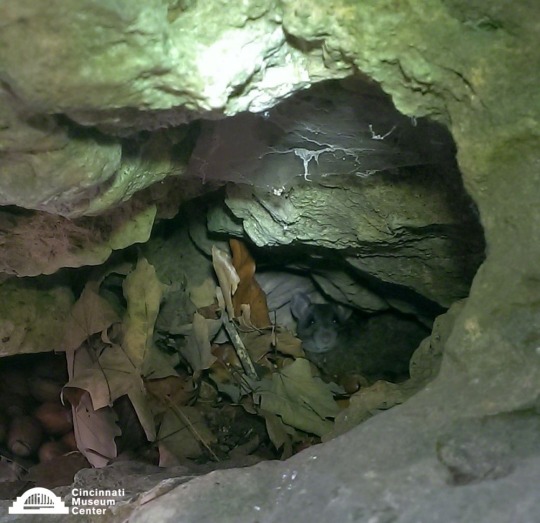
🐀Off the Shelf Blog! Read about how Heather Farrington, our Curator of Zoology, has been studying the Allegheny woodrat at our Edge of Appalachia Preserve System, one of the largest privately-owned preserves east of the Mississippi. This species is endangered in Ohio and is found only in Adams County. https://www.cincymuseum.org/2020/02/24/woodrat-hunting-with-cmcs-zoology-curator/
At this current time, our trails remain open at #theEDGE. However please note that the Eulett Center that is on that site is closed. #CMCuncrated
1 note
·
View note
Text




Have you found and utilized these neat interactives created by our friends at GBBN Architects yet? Placed throughout the building, they highlight various aspects of our recent restoration along with #UnionTerminalDecoDetails. This one showcases the technology in the restoration. Without it, the entire 500,000 square feet of our building would have needed to be measured by hand in order to create needed drawings. Instead, 2,300 laser scanning stations were used to collect 4.3 billion data points so work could begin quickly. Next time you visit, scan the QR code to learn and see more.
#museums#history#architecture#3dscan#laserscan#unionterminaldecodetails#unionterminal#cincymuseum#architects
3 notes
·
View notes
Text

Did you know that our beloved green pigmented terrazzo Union Terminal fountain holds 44,000 gallons of water?! The terrazzo and marble chips of the fountain were applied over a two-layer polyurea waterproofing system that will protect the fountain structure from future water penetration. This iconic CMC building feature turned on for the first time after our restoration this past summer, and we can't wait for future summers with the fountain!
6 notes
·
View notes